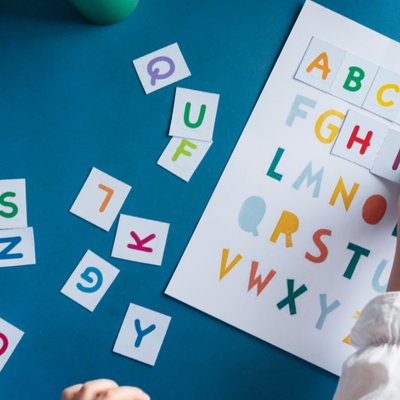Learn English: Online Games vs. In-Person Classes
Learning English is an essential skill that can open doors to new opportunities in life. However, with so many options available, it can be challenging to decide what’s the best way to learn English.
May 26, 2023

For individuals embarking on the journey of learning English, having the right tools and resources can greatly facilitate their language acquisition process.
The English Learner Toolkit is a comprehensive resource that provides a wide range of strategies and tools specifically designed to support English language learners (ELLs) in their educational journey. It offers practical guidance and resources to educators, making it an invaluable asset for educating and empowering ELLs.
The toolkit emphasizes the importance of creating an inclusive and supportive learning environment that fosters the success of ELLs.
According to the U.S. Department of Education, an estimated 4.9 million students in U.S. public schools are classified as English language learners (ELLs).
In addition to the toolkit, there are specific resources available such as the English Learner Family Toolkit, which aims to engage and involve families in supporting their children's English language development. This collaboration between educators and families is vital in promoting the educational growth and well-being of ELLs.
Community resources play a significant role in supporting English language learners. By tapping into community organizations and services, educators can expand the learning opportunities for ELLs and provide them with the necessary support to thrive academically.

The English Learner Program focuses on providing targeted instruction, language development opportunities, and cultural sensitivity to ensure ELLs receive a quality education.
Retaining English learners and supporting their long-term success is a critical objective.
Special education plays an essential role in supporting English language learners with additional learning needs. The English Learner Toolkit acknowledges the importance of collaboration between ESL and special education teachers to provide inclusive and differentiated instruction for ELLs.
Understanding the various typologies of English language learners is crucial for effective instruction. The English Learner Toolkit acknowledges the diversity within the ELL population and provides insights into different language acquisition patterns, cultural backgrounds, and educational experiences.

The humble trio of a notebook, pen, and notepad serves as the foundation of the English learner toolkit. These essential tools allow learners to jot down new vocabulary, grammar rules, and practice writing exercises. Regularly writing in a dedicated notebook helps reinforce learning and enables learners to track their progress.
Research suggests that taking handwritten notes can improve information retention and understanding. A study conducted by Mueller and Oppenheimer (2014) found that students who took notes by hand performed better in conceptual learning and long-term retention compared to those who typed their notes.
Engaging in crossword puzzles and solving riddles not only promotes critical thinking but also enhances vocabulary and comprehension skills. Crossword puzzles challenge learners to decipher word clues and find corresponding solutions, expanding their English language repertoire in an entertaining manner.
Crossword puzzles have been shown to enhance vocabulary acquisition and word recall. A study by Zeng and colleagues (2019) demonstrated that solving crossword puzzles can improve both active and passive vocabulary knowledge, helping learners expand their word bank.

A useful resource for language learners, phrasebooks provide ready-made expressions and commonly used phrases in English. These compact books allow learners to familiarize themselves with practical language structures for various situations, such as greetings, ordering food, or asking for directions.
Using conversation phrasebooks allows learners to practice real-life dialogues and improve their speaking skills. Research by Ismail and Kasim (2020) showed that incorporating conversation phrasebooks in language learning can enhance learners' fluency and confidence in oral communication.
Watching movies with subtitles is an effective way to develop listening and comprehension skills. By following the dialogue while reading the subtitles, learners can improve their understanding of spoken English, learn new vocabulary, and observe the natural rhythm and intonation of the language.
Watching films with subtitles can enhance listening comprehension and vocabulary acquisition. According to a study by Vanderplank (2013), learners exposed to subtitled videos demonstrated improved comprehension and retention of new words and phrases.
Simple stories and children's books provide learners with accessible reading material that gradually introduces new vocabulary and grammar structures. Reading such texts helps learners improve their reading comprehension, expand their vocabulary, and gain insight into the cultural aspects of the English language. Children's dictionaries offer age-appropriate definitions and explanations, making it easier for learners to grasp new words.
Modern technology has revolutionized language learning, and language learning applications, such as Langly App, provide learners with interactive and customizable learning experiences. These apps offer a range of features, including vocabulary exercises, grammar lessons, pronunciation guides, and language practice with native speakers, all accessible at the learners' convenience.
From traditional instruments like notebooks and phrasebooks to modern resources like language learning applications, each tool offers unique benefits that cater to different learning styles. By utilizing these tools effectively, English language learners can enhance their language skills, build confidence, and embark on a successful journey toward fluency.